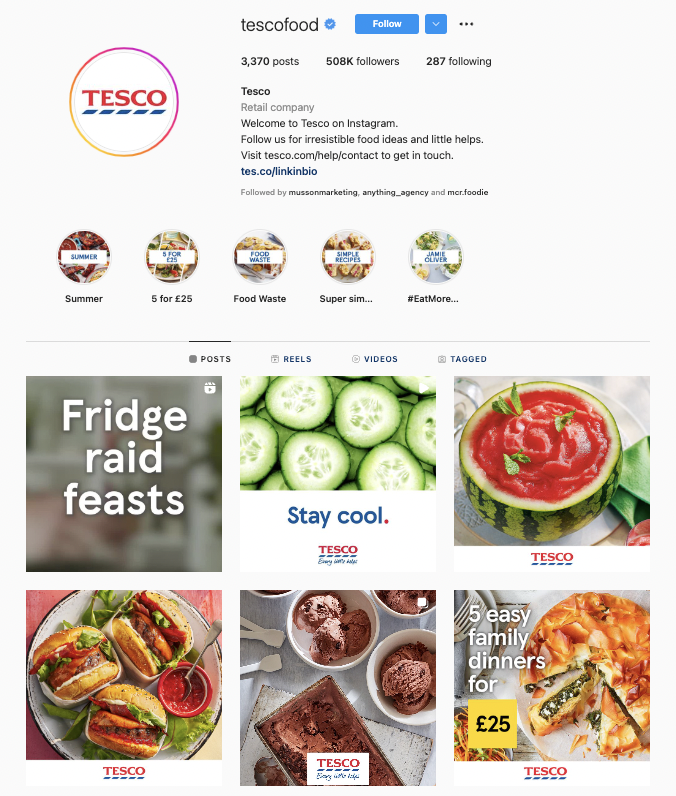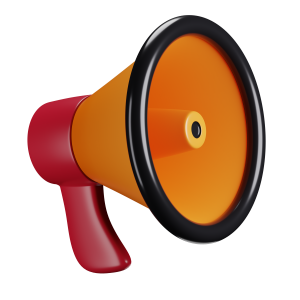There can be so much to think about when it comes to social media marketing. What should my strategy be? How do I identify my content pillars? Which channels are best suited for my business? It can be a bit overwhelming. This is why I always recommend your first port of call should be getting to grips with what it all means. That’s where my social media glossary comes into play.
Algorithm
The algorithm in social media is a way social media platforms sort posts to enhance its user’s experience. Its aim is to show content which is relevant to its users based on their behaviour such as what they like, comment on and who they follow. From this, they prioritise the content they deem as relevant by positioning it high up on the user’s feed, based on the fact it is likely it is the type of posts they enjoy and engage with.
This is something you need to keep in mind when creating content for your target audiences to ensure it has a chance versus the algorithm.
Bio
A social media bio in a nutshell is an introduction to who you are and what you do. This can make you easier to find by your target audience, so make sure you are clear and concise – you only have 100+ characters!
Brand
A brand is a name, term, design, symbol, or any other feature that differentiates one seller’s goods or services from others. A business’s brand is its identity, from its logo to its brand values. On social media, it is crucial that a business portrays its brand clearly and concisely via its content and on its social media profiles to raise brand awareness.
Clicks
A click is a metric that is used to measure the number of clicks your content receives. Whether it is a click on a link, on an image, or through to your profile, a “click” can mean a number of different things. This is usually broken down when looking at the analytics for each post.
Click Through Rate (CTR)
A click-through rate (CTR) is the ratio of users who click on a link divided by the number of users who have seen your post (or to talk in social media terms, by the number of impressions your post receives).
This is calculated by the following formula:
Impressions ÷ number of clicks x 100 = CTR%
This is a very important statistic, as it will identify how many conversions your content actually receives. A low click-through rate means your content isn’t converting your impressions, giving you the opportunity to switch up your content accordingly.
Comment
A comment is a form of engagement, on each post users have the opportunity to leave comments on your post. You have the option to turn this feature off on individual posts if necessary.
Competitors
A competitor is another business in the same industry as you who will be targeting the same audience as you trying to win their custom.
Content pillars
Content pillars are created to identify the core messages you can base your social media content around. They might be 3 to 5 topics related to your brand and business you can circulate week on week in your content schedule. For example, Tesco’s (@tescofood) content pillars on Instagram surround the products their customers can buy in-store, recipes, offers, their ongoing campaign with Jamie Oliver, and the charity work they do.

Conversions
A conversion is an action made by the user as a result of your social media content. A conversion can come in many different forms, meaning it could be a result of you telling them to do different things, for example, clicking through to a certain landing page and signing up to your newsletter.
Conversion Rate (CR)
A conversion rate (CR) is the percentage of users who take a particular action. For example, from social media, they head to your website as a result of your post and use your contact form to get in touch about your services. The conversion rate formula calculates the percentage of people who made this action as a result of clicking the link in your post.
This is calculated by the following formula:
Number of conversions ÷ number of visitors to your website/landing page x 100 = CR%
This is a great way to track how successful your conversion strategy is. If you have a high number of web visitors originating from social media, but they don’t make a conversion, you know as part of that customer’s journey there is something stopping them from leaping the final hurdle across the finish line. But if you don’t have a high number of visitors, you know your social media strategy requires some fine-tuning.
Call to action (CTA)
A call to action (CTA) is when you strategically encourage your audience to do something after seeing your post with a direction. For example:
“Want to find out more? Then head to our website by clicking here (insert link)!”
“If you like this type of content, then click the following link to sign up to our newsletter (insert link).”
“If this sounds like you, then you can enquire about our services by heading to our contact page (insert link).”
You should always insert a CTA where necessary.
Direct Message (DM)
A direct message is a form of private communication between yourself and another user on social media.
Engagement
Engagement is a metric to measure how enjoyable/relevant your audience finds your content. Examples of these are:
- Likes
- Comments
- Shares
- Saves of your post
Engagement Rate
Engagement rate is a percentage that indicates the level of interaction your content receives from your followers.
This is calculated by the following formula:
Total engagement ÷ total followers x 100 = Engagement rate %
If you have a high number of followers, but a low engagement rate, this means your content isn’t being seen as relevant by the algorithm, or by your followers. Go back and take a look at your social media strategy, and use techniques such as social listening to evaluate what needs to change.
Feed
Feeds are like the homepages of social media platforms. The accounts you follow, their content will be displayed on your social media feed.
Follower
A follower is a user on a social media platform who makes the decision to stay up to date with your content by following your account/page. This means any future content you post, considering the algorithm finds it relevant to the user, they will be able to see it on their feed. The higher your follower count, the more impressions your content receives.
Impressions
An impression measures the number of times your content is seen. For example, 1000 impressions means your post was seen a thousand times.
Like
A like on your post is a form of engagement.
Meme
A meme is a comedic form of content which is used to represent a theme or situation in a humorous way. Usually, the content used is repurposed from another source and used in a different, comical context.
Ryan Air (@ryanair on Instagram) do a job of utilising memes to promote the airline and its low-cost flights.
Reach
Reach measures the number of people that see your content. For example, a reach of 1000 means your content was seen by 1000 different accounts.
Shares
A share is when another user shares your post onto their own page/profile, meaning your post is then shown to all their followers. The more share your post receives, the higher the reach and impressions will be.
Social Listening
Social listening is when you monitor social media channels for mentions relevant to your brand or business.
This could be direct mentions of your brand, competitors, products, services or keywords related to your business. From social listening, you can find windows of opportunity to engage with your audience or stakeholders to raise awareness of your business and brand. |
It also gives you the opportunity to understand how your target audience feels about your competitors, your brand or the services you offer and take this into consideration when creating your content strategy.



